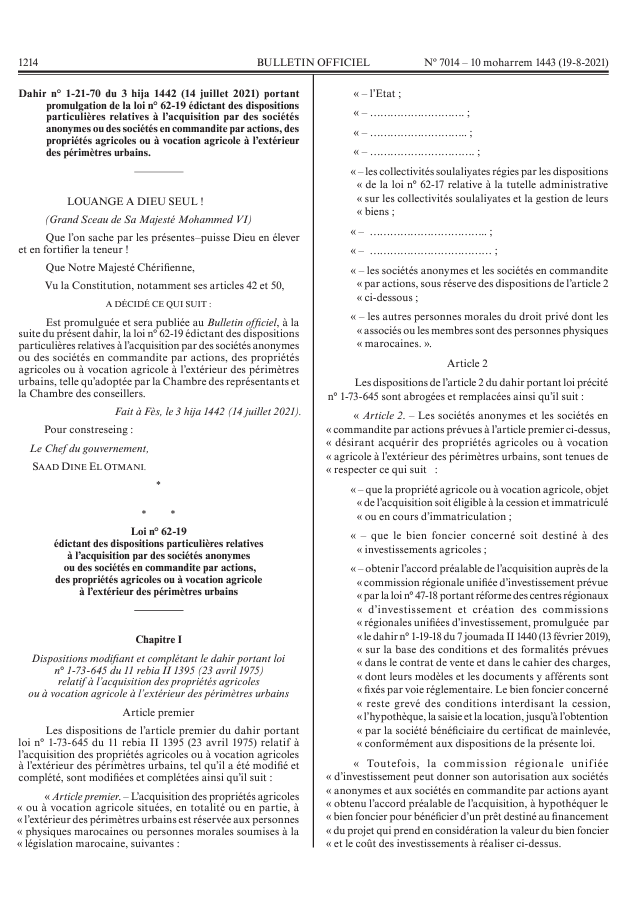In 788, about a century after the Arab conquest of North Africa, a series of Moroccan Muslim dynasties began to rule in Morocco. In the 16th century, the Sa'adi monarchy, particularly under Ahmad al-MANSUR (1578-1603), repelled foreign invaders and inaugurated a golden age. The Alaouite Dynasty, to which the current Moroccan royal family belongs, dates from the 17th century. In 1860, Spain occupied northern Morocco and ushered in a half century of trade rivalry among European powers that saw Morocco's sovereignty steadily erode; in 1912, the French imposed a protectorate over the country. A protracted independence struggle with France ended successfully in 1956. The internationalized city of Tangier and most Spanish possessions were turned over to the new country that same year. Sultan MOHAMMED V, the current monarch's grandfather, organized the new state as a constitutional monarchy and in 1957 assumed the title of king. Since Spain's 1976 withdrawal from what is today called Western Sahara, Morocco has extended its de facto administrative control to roughly 80% of this territory; however, the UN does not recognize Morocco as the administering power for Western Sahara. The UN since 1991 has monitored a cease-fire between Morocco and the Polisario Front - Western Sahara's liberation movement - and leads ongoing negotiations over the status of the territory.
King MOHAMMED VI in early 2011 responded to the spread of pro-democracy protests in the region by implementing a reform program that included a new constitution, passed by popular referendum in July 2011, under which some new powers were extended to parliament and the prime minister but ultimate authority remains in the hands of the monarch. In November 2011, the Justice and Development Party (PJD) - a moderate Islamist party - won the largest number of seats in parliamentary elections, becoming the first Islamist party to lead the Moroccan Government. In September 2015, Morocco held its first ever direct elections for regional councils, one of the reforms included in the 2011 constitution. The PJD again won the largest number of seats in nationwide parliamentary elections in October 2016.
Morocco is a parliamentary constitutional monarchy.
Source: CIA World Factbook
Members:
Resources
Displaying 1 - 5 of 26Dahir n° 1-21-70 du 3 hija 1442 (14 juillet 2021) portant promulgation de la loi n° 62-19 édictant des dispositions particulières relatives à l’acquisition par des sociétés anonymes ou des sociétés en commandite par actions, des propriétés agricoles [...]
Est promulguée et sera publiée au Bulletin officiel, à la suite du présent dahir, la loi n° 62-19 édictant des dispositions particulières relatives à l’acquisition par des sociétés anonymes ou des sociétés en commandite par actions, des propriétés agricoles ou à vocation agricole à l’extérieur des périmètres urbains, telle qu’adoptée par la Chambre des représentants et la Chambre des conseillers.
Recours aux satellites pour appuyer le management de l’eau d’irrigation: Estimation des besoins en eau des agrumes par télédétection dans la Plaine de Triffa-Berkane (Maroc)
Les agrumes représentent la première culture irriguée dans la plaine de Trifa (Berkane, Maroc) avec une superficie en extension continue. Ceci accentue les pressions sur les ressources en eau déjà limitées dans la région. De ce fait, une gouvernance efficace et rationnelle de l’eau agricole s’impose. Dans ce travail, nous proposons une approche basée sur les observations satellitaires pour appuyer la gestion de l’eau d’irrigation consommée par les surfaces agrumicoles.
Décret n° 2-16-375 du 13 chaoual1437 (18 juillet 2016) fixant le tarif des droits de conservation foncière.
Le présent décret fixe le tarif des droits de conservation foncière.
Décret n° 2-16-263 du 17 chaabane 1437 (24 mai 2016) portant création de la commission ministérielle permanente de la politique foncière.
Le présent décret institue auprès du Chef du gouvernement une commission ministérielle permanente de la politique foncière, ci-après dénommée « la commission ».
Loi n° 113-13 du 27 avril 2016 relative à la transhumance pastorale, à l'aménagement et à la gestion des espaces pastoraux et sylvopastoraux.
La présente loi fixe les principes et les règles générales régissant l’aménagement et la gestion des espaces pastoraux et sylvo pastoraux, l’utilisation et le développement des ressources pastorales, la transhumance pastorale et la mobilité des troupeaux.




